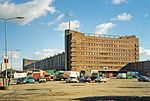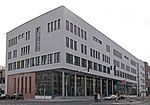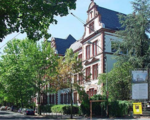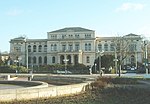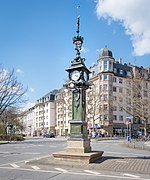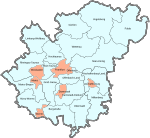Seat of the European Central Bank

The seat of the European Central Bank (ECB) is an office building complex in Frankfurt, Germany. It comprises a twin-tower skyscraper and the former Wholesale Market Hall (Großmarkthalle), with a low-rise building connecting the two. It was completed in 2014 and was officially opened on 18 March 2015. The ECB is required by the Treaties of the European Union to have its seat within the city limits of Frankfurt, the largest financial centre in the Eurozone. The ECB previously resided in the Eurotower and, as its duties increased due to countries joining the Eurozone, in three further high-rise buildings nearby - the Eurotheum, Japan Center and Neue Mainzer Straße 32–36, the former head office of the Commerzbank.
Excerpt from the Wikipedia article Seat of the European Central Bank (License: CC BY-SA 3.0, Authors, Images).Seat of the European Central Bank
Sonnemannstraße, Frankfurt Ostend (Bornheim/Ostend)
Geographical coordinates (GPS) Address Nearby Places Show on map
Geographical coordinates (GPS)
| Latitude | Longitude |
|---|---|
| N 50.10944 ° | E 8.7025 ° |
Address
Großmarkthalle (ehem.Großmarkthalle)
Sonnemannstraße 20
60314 Frankfurt, Ostend (Bornheim/Ostend)
Hesse, Germany
Open on Google Maps
